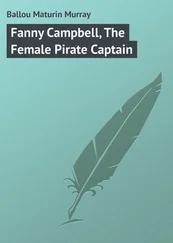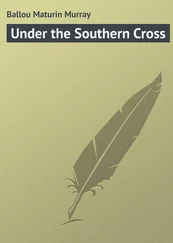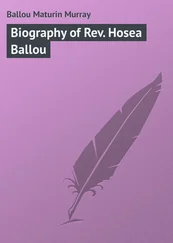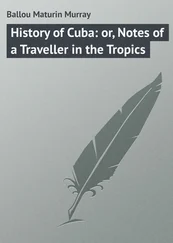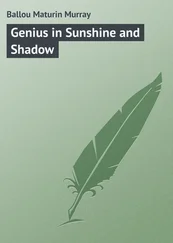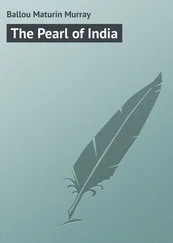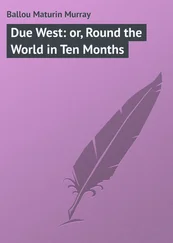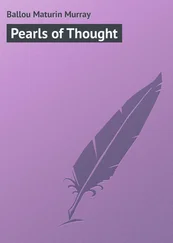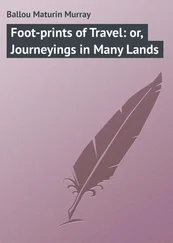Maturin Ballou - Equatorial America
Здесь есть возможность читать онлайн «Maturin Ballou - Equatorial America» — ознакомительный отрывок электронной книги совершенно бесплатно, а после прочтения отрывка купить полную версию. В некоторых случаях можно слушать аудио, скачать через торрент в формате fb2 и присутствует краткое содержание. Жанр: foreign_language, foreign_prose, Путешествия и география, на английском языке. Описание произведения, (предисловие) а так же отзывы посетителей доступны на портале библиотеки ЛибКат.
- Название:Equatorial America
- Автор:
- Жанр:
- Год:неизвестен
- ISBN:нет данных
- Рейтинг книги:4 / 5. Голосов: 1
-
Избранное:Добавить в избранное
- Отзывы:
-
Ваша оценка:
- 80
- 1
- 2
- 3
- 4
- 5
Equatorial America: краткое содержание, описание и аннотация
Предлагаем к чтению аннотацию, описание, краткое содержание или предисловие (зависит от того, что написал сам автор книги «Equatorial America»). Если вы не нашли необходимую информацию о книге — напишите в комментариях, мы постараемся отыскать её.
Equatorial America — читать онлайн ознакомительный отрывок
Ниже представлен текст книги, разбитый по страницам. Система сохранения места последней прочитанной страницы, позволяет с удобством читать онлайн бесплатно книгу «Equatorial America», без необходимости каждый раз заново искать на чём Вы остановились. Поставьте закладку, и сможете в любой момент перейти на страницу, на которой закончили чтение.
Интервал:
Закладка:
Martinique is eight times as large as St. Thomas, containing a population of about one hundred and seventy-five thousand. Within its borders there are at least five extinct volcanoes, one of which has an enormous crater, exceeded by only three or four others in the known world. The island rises from the sea in three groups of rugged peaks, and contains some very fertile valleys. So late as 1851, Mont Pelée burst forth furiously with flames and smoke, which naturally threw the people into a serious panic, many persons taking refuge temporarily on board the shipping in the harbor. The eruption on this occasion did not amount to anything very serious, only covering some hundreds of acres with sulphurous débris, yet serving to show that the volcano was not dead, but sleeping. Once or twice since that date ominous mutterings have been heard from Mont Pelée, which it is confidently predicted will one day deluge St. Pierre with ashes and lava, repeating the story of Pompeii.
Sugar, rum, coffee, and cotton are the staple products here, supplemented by tobacco, manioc flour, bread-fruit, and bananas. Rum is very extensively manufactured, and has a good mercantile reputation for its excellence, commanding as high prices as the more famous article of the same nature produced at Jamaica. The purpose of the author is mainly to record personal impressions, but a certain sprinkling of statistics and detail is inevitable, if we would inform, as well as amuse, the average reader.
The flora of Martinique is the marvel and delight of all who have enjoyed its extraordinary beauty, while the great abundance and variety of its fruits are believed to be unsurpassed even in the prolific tropics. Of that favorite, the mango, the island produces some forty varieties, and probably in no other region has the muscatel grape reached to such perfection in size and flavor. The whole island looks like a maze of greenery, as it is approached from the sea, vividly recalling Tutuila of the Samoan group in the South Pacific. Like most of the West Indian islands, Martinique was once densely covered with trees, and a remnant of these ancient woods creeps down to the neighborhood of St. Pierre to-day.
The principal landing is crowded at all times with hogsheads of sugar and molasses, and other casks containing the highly scented island rum, the two sweets, together with the spirits, causing a nauseous odor under the powerful heat of a vertical sun. We must not forget to mention, however, that St. Pierre has a specific for bad odors in her somewhat peculiar specialty, namely, eau-de-cologne, which is manufactured on this island, and is equal to the European article of the same name, distilled at the famous city on the Rhine. No one visits the port, if it be for but a single day, without bringing away a sample bottle of this delicate perfumery, a small portion of which, added to the morning bath, is delightfully refreshing, especially when one uses salt water at sea, it so effectively removes the saline stickiness which is apt to remain upon the limbs and body after a cold bath.
The town is blessed with an inexhaustible supply of good, fresh, mountain water, which, besides furnishing the necessary quantity for several large drinking fountains, feeds some ornamental ones, and purifies the streets by a flow through the gutters, after the fashion of Salt Lake City, Utah. This is in fact the only system of drainage at St. Pierre. A bronze fountain in the Place Bertin is fed from this source, and is an object of great pleasure in a climate where cold water in abundance is an inestimable boon. This elaborate fountain was the gift of a colored man, named Alfred Agnew, who was at one time mayor of the city. Many of the gardens attached to the dwelling-houses are ornamented with ever-flowing fountains, which impart a refreshing coolness to the tropical atmosphere.
The Rue Victor Hugo is the main thoroughfare, traversing the whole length of the town parallel with the shore, up hill and down, crossing a small bridge, and finally losing itself in the environs. It is nicely kept, well paved, and, though it is rather narrow, it is the Broadway of St. Pierre. Some of the streets are so abrupt in grade as to recall similar avenues in the English portion of Hong Kong, too steep for the passage of vehicles, or even for donkeys, being ascended by means of much worn stone steps. Fine, broad roadways surround the town and form pleasant drives.
The cathedral has a sweet chime of bells, whose soft, liquid notes came to us across the water of the bay with touching cadence at the Angelus hour. It must be a sadly calloused heart which fails to respond to these twilight sounds in an isle of the Caribbean Sea. Millet's impressive picture was vividly recalled as we sat upon the deck and listened to those bells, whose notes floated softly upon the air as if bidding farewell to the lingering daylight. At the moment, all else being so still, it seemed as though one's heartbeat could be heard, while the senses were bathed in a tranquil gladness incited by the surrounding scenery and the suggestiveness of the hour.
Three fourths of the population are half-breeds, born of whites, blacks, or mulattoes, with a possible strain of Carib blood in their veins, the result of which is sometimes a very handsome type of bronzed hue, but of Circassian features. Some of the young women of the better class are very attractive, with complexions of a gypsy color, like the artists' models who frequent the "Spanish Stairs" leading to the Trinità di Monti, at Rome. These girls possess deep, dark eyes, pearly teeth, with good figures, upright and supple as the palms. In dress they affect all the colors of the rainbow, presenting oftentimes a charming audacity of contrasts, and somehow it seems to be quite the thing for them to do so; it accords perfectly with their complexions, with the climate, with everything tropical. The many-colored Madras kerchief is universally worn by the common class of women, twisted into a jaunty turban, with one well-starched end ingeniously arranged so as to stand upright like a soldier's plume. The love of ornament is displayed by the wearing of hoop earrings of enormous size, together with triple strings of gold beads, and bracelets of the same material. If any one imagines he has seen larger sized hoop earrings this side of Africa, he is mistaken. They are more like bangles than earrings, hanging down so as to rest upon the neck and shoulders. Those who cannot afford the genuine article satisfy their vanity with gaudy imitations. They form a very curious and interesting study, these black, brown, and yellow people, both men and women. In the market-place at the north end of the town, the women preside over their bananas, oranges, and other fruits, in groups, squatting like Asiatics on their heels. In the Havana fish market, one compares the variety of colors exhibited by the fishes exposed for sale to those of the kaleidoscope, but here the Cuban display is equaled if not surpassed.
St. Pierre has a botanical garden, situated about a mile from the centre of the town, so located as to admit of utilizing a portion of the native forest yet left standing, with here and there an impenetrable growth of the feathery bamboo, king of the grasses, interspersed with the royal palm and lighter green tree-ferns. The bamboo is a marvel, single stems of it often attaining a height in tropical regions of a hundred and seventy feet, and a diameter of a foot. So rapid is its growth that it is sometimes known to attain the height of a hundred feet in sixty days. Art has done something to improve the advantages afforded by nature in this botanical garden, arranging some pretty lakes, fountains, and cascades. Vistas have been cut through the dense undergrowth, and driveways have been made, thus improving the rather neglected grounds. One pretty lake of considerable size contains three or four small islands, covered with flowering plants, while on the shore are pretty summer houses and inviting arbors. The frangipanni, tall and almost leafless, but with thick, fleshy shoots and a broad-spread, single leaf, was recognized here among other interesting plants. This is the fragrant flower mentioned by the early discoverers. There was also the parti-colored passion-flower, and groups of odd-shaped cacti, whose thick, green leaves were daintily rimmed with an odorless yellow bloom. Here, also, is an interesting example of the ceba-tree, in whose shade a hundred persons might banquet together. The author has seen specimens of the ceba superbly developed in Cuba and the Bahamas, with its massive and curiously buttressed trunk, having the large roots half above ground. It is a solitary tree, growing to a large size and enjoying great longevity. Mangoes abound here, the finest known as the mango d'or . There is a certain air about the public garden of St. Pierre, indicating that nature is permitted in a large degree to have her own sweet will. Evidences enough remain to show the visitor that these grounds must once have been in a much more presentable condition. There is a musical cascade, which is well worth a long walk to see and enjoy. Just inside of the entrance, one spot was all ablaze with a tiny yellow flower, best known to us as English broom, Cytisus genista . Its profuse but delicate bloom was dazzling beneath the bright sun's rays. Could it possibly be indigenous? No one could tell us. Probably some resident brought it hither from his home across the ocean, and it has kindly adapted itself to the new soil and climate.
Читать дальшеИнтервал:
Закладка:
Похожие книги на «Equatorial America»
Представляем Вашему вниманию похожие книги на «Equatorial America» списком для выбора. Мы отобрали схожую по названию и смыслу литературу в надежде предоставить читателям больше вариантов отыскать новые, интересные, ещё непрочитанные произведения.
Обсуждение, отзывы о книге «Equatorial America» и просто собственные мнения читателей. Оставьте ваши комментарии, напишите, что Вы думаете о произведении, его смысле или главных героях. Укажите что конкретно понравилось, а что нет, и почему Вы так считаете.


